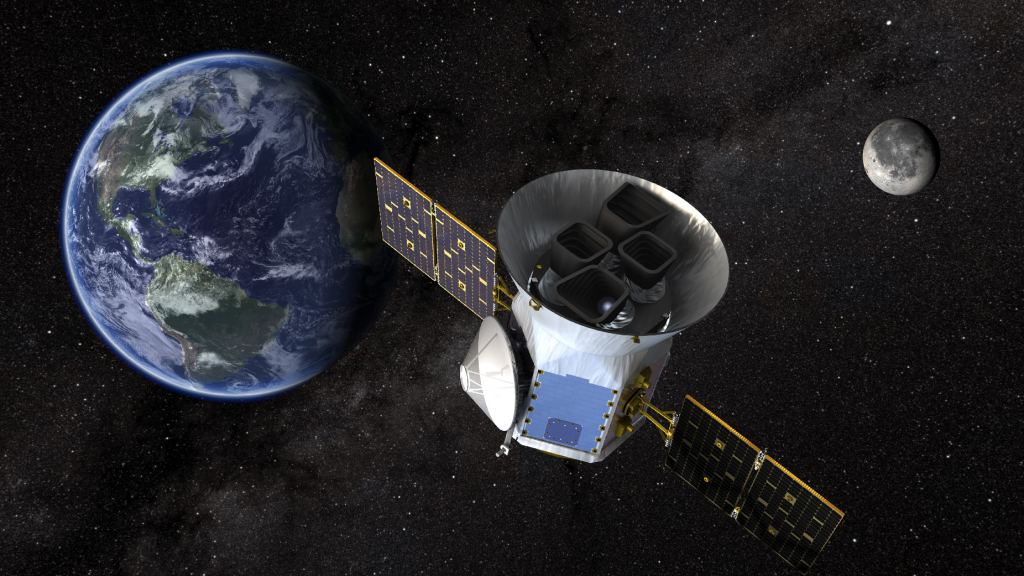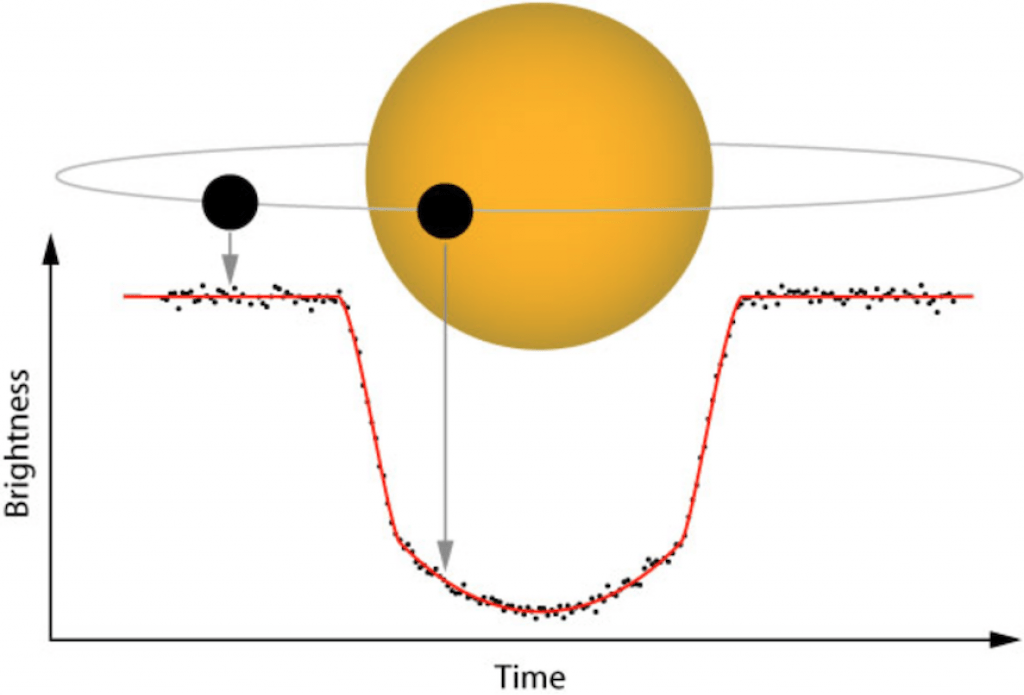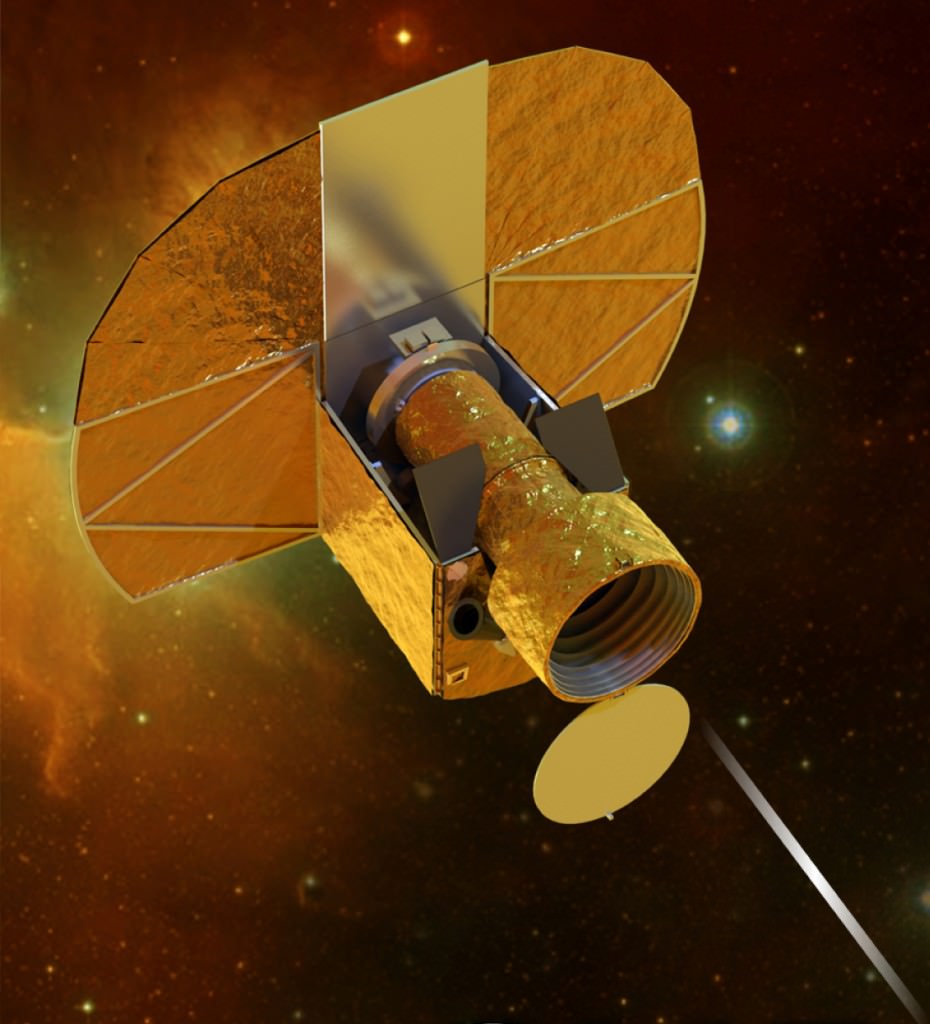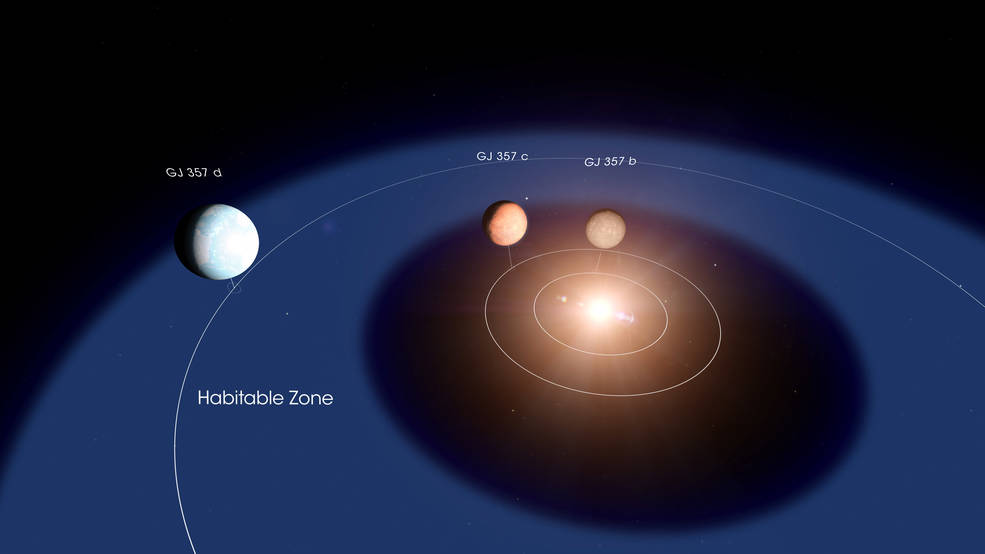NASA’s Transiting Exoplanet Survey Telescope launched back in April, 2018. After a few months of testing, it was ready to begin mapping the southern sky, searching for planets orbiting stars relatively nearby.
We’re just over a year into the mission now, and on July 18th, TESS has shifted its attention to the Northern Hemisphere, continuing the hunt for planets in the northern skies.
As part of this shift, NASA has announced a handful of fascinating new planets turned up by TESS, including a couple of worlds in categories which have never been seen before.
How many confirmed exoplanets have astronomers found so far? At the time of this recording, NASA’s Exoplanet Archive has a catalog of 4,301 worlds out there that we know of, so far. With almost as many additional planetary candidates.
But over the last year, NASA’s latest planet hunter, the TESS mission, has been hard at work, gathering up planets to add to this growing database. It’s halfway through its two-year primary mission, with 993 candidate worlds found so far, as well as 28 confirmed planets.
First a little background on the TESS mission, and then we’ll get into the new results. We’ve done a whole episode on Kepler and TESS, but here’s the short version.
The mission was launched on April 18, 2018, with the goal of discovering exoplanets located within about 300 light-years of Earth.
TESS follows a 13.7-day lunar resonant orbit never before used on a spacecraft mission. This is exactly half the orbital period of the Moon, which causes the gravitational forces on the spacecraft to roughly balance out.
At the closest point of its orbit, it’s just 108,000 km above the surface of the Earth, the ideal time to transmit all its data. Then it reaches 373,000 km at the high point of its orbit, a region that’s free of the trapped radiation in the Earth’s magnetosphere.

TESS uses four large cameras which watch a large portion of the sky non-stop for 27 straight days. Then, it shifts its view to another region and watches again for another 27 days. Some regions are unique, but there are parts which overlap, and can be seen for even longer than a month.
The spacecraft uses the transit method to find planets, watching for a slight dip in brightness as a planet passes in front of its star. The amount of the dip and the length of time it takes to complete tells astronomers how big the planet is, and what its orbit is.
The initial dip in brightness gives astronomers a hint that a planet might be there, a candidate. Astronomers need to see three transits in the TESS data, since other natural phenomena can mimic a planetary transit, like a variable star, or cloud of dust surrounding the star.

Then other telescopes around the world and in space (and even amateur astronomers) continue to watch these stars over the months and years, working to confirm that planets are there and what their actual orbital periods are.
Unlike the Kepler mission, which was studying one single spot in the sky for a really long period, and turning up planets thousands of light-years away TESS is picking up the planetary candidates which are within about 300 light-years of Earth.
It’s a finder telescope for the next generation of massive Earth and space-based telescopes like the European Extremely Large Telescope and the James Webb Space Telescope. These are the instruments which will make the follow on observations and tell us more about these newly discovered planets.

ESA’s CHEOPS mission is due for launch later this year, it will perform follow on observations of candidate exoplanets discovered so far, trying to narrow down their size and orbital periods. Thanks to CHEOPS, the number of confirmed exoplanets will start to catch up with the number of planetary candidates.
Let’s get into the new planets.

L 98-59
About a month ago, on June 28th, 2019, astronomers announced that they had discovered the smallest world TESS has ever seen.
The star is called L 98-59, and it’s an M-dwarf star (or a red dwarf star for us non-astronomers), with about a third the mass of the Sun.
There are three planets discovered in the system so far. The closest to the star is L 98-59b, which is only 80% the size of Earth, orbiting its star every 2.25 days. It gets about 22 times the energy from the star than the Earth gets from the Sun. It’s a little bigger than Mars.
This isn’t the smallest planet discovered so far, though, that’s Kepler-37b, which is only 20% larger than the Earth’s Moon.
The second planet in the system is 1.4 times the size of the Earth, and orbits every 3.7 days. The outer planet is 1.6 times bigger than Earth and orbits every 7.5 days.
Forget about habitability. All of these planets are totally scorched by their star, and could be classified in the Venus zone. They could have been more habitable in the past, but they’re probably way too hot for life.
So let’s move on.
Gliese 357
On July 31, 2019, scientists announced a new planet orbiting the star Gleise 357. It’s another M-dwarf star, and the planet is about 22% larger than the Earth.
What makes this planet really strange is that it orbits about 11 times closer to its star than Mercury.
The first exoplanets ever discovered around a main sequence star were hot Jupiters. Planets with many times the mass of Jupiter, but orbiting in just a couple of days. These were thought impossible, but there they are.
Now, astronomers have found a hot-superearth. A mega Mercury?

Since it’s an M-dwarf star, it’s putting out less radiation than the Sun, but orbiting this close makes for a hot planet.
Without an atmosphere, it’ll have an average surface temperature of about 254 Celsius (or 490 degrees Fahrenheit). That’s hot, considering Mercury’s average temperature is 167 Celsius. Put an atmosphere on top of that to trap the heat, and this world will be insanely hot.
Good news, Gliese 357 is located only 31 light-years from Earth, which makes it the third closest exoplanetary system found. This is a great example of the nearby planets that TESS is going to be finding.
Astronomers found even more planets in the system too. The second planet, 357c has a mass of about 3.4 times the Earth and orbits the star every 9.1 days. Its average temperature is still hot, about 127 Celsius.
Now, notice that I said mass and not size? That’s because 357c wasn’t discovered using the transit method, it isn’t lined up to pass directly between us and the star like the hot Earth 357b. Instead, astronomers were using a ground-based observatory to do follow on observations using the radial velocity method.
This is there astronomers measure how the star itself is yanked back and forth by the gravity of its planets. This technique led to the discovery of the second planet.
And it also led to the discovery of a third, even more intriguing planet: Gliese 357d.
This planet has about 6.1 times the mass of the Earth and takes about 55.7 days to orbit around the star. Its average temperature is about -53C, which probably means that its covered in glaciers and snow, but it’s still theoretically inside the habitable zone of the star depending on how thick the atmosphere is.
It’s a super Earth, about double the size of the Earth, but probably made of rock like our own planet.

TOI 270
In addition to the announcement of planets at Gliese 357, the TESS team announced three additional planets around the star UCAC4 191-004644, or TESS Object of Interest 270, or TOI 270, located about 73 light-years away in the constellation of Pictor.
Again, this is an M-dwarf star, with only about 40% the mass and size of the Sun, and a much cooler surface temperature.
The inner planet, TOI 270 b is probably a rocky world about 25% larger than Earth, orbiting its star every 3.4 days at a distance 13 times closer than Mercury. Because it’s a transit, they couldn’t get at the mass directly, but based on simulations, it’s about 1.9 times the mass of the Earth.
But it’s a scorcher, with an average temperature of 254 Celsius.
The next planet in the system is TOI 270 c. This is 2.4 times larger than the Earth, orbits every 5.7 days and could be described as a mini-Neptune, with a likely mass of about 7 times the Earth.
The third planet, TOI 270 d, is 2.1 times the size of Earth, orbits every 11.4 days and is probably 2.1 times the size of the Earth. Again, another mini-Neptune, but with an average temperature of 66 Celsius. That’s hot, but not too hot.
Of course, all three planets are probably tidally locked to their star, which means they always show the same side. The side towards the star is hot, the side away from the star is cold. But there could be a reasonable spot right on the terminator, the edge of the planet between day and night.
We actually don’t have anything like this in the Solar System. A world that’s in between the size and mass of the smaller terrestrial planets and the larger gas giants in the outer Solar System. This makes them a fascinating target for the next generation of telescopes, like James Webb. TOI 270 will be high in the sky for Webb for half the year, so it’ll be studying it extensively.
So here we are. It’s been over a year since TESS went into its science operations, completely scanning the Southern Hemisphere’s skies, and turning up almost 1,000 planetary candidates and 28 confirmed exoplanets.
Time really flies. It’s found hot-superearths, mini-neptunes, and now the spacecraft turns its gaze to the Northern skies, and hopefully will find even more. I can’t wait to see what turns up next, and I’m sure I’ll give you another big update in a year from now.
